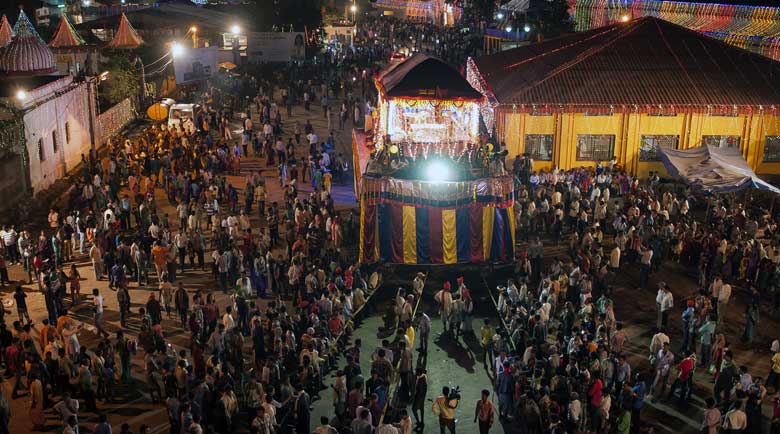Bastar Dusshera: Unique 75-day celebrations of tribal tradition
Bastar | Correspondent: The celebrations of the vibrant 75-day long Bastar Dusshera extravaganza has begun. Bastar Dusshera is very different from the Dusshera celebrated across the country.
The festival includes lively processions accompanied by traditional music and dance, highlighting the region’s rich culture and beauty.
Bastar Dussehra offers a captivating insight into the traditions, artistry, and spirituality of the tribal communities.
The festival, began on August 4, 2024, with the Pat Jatra Puja, will continue until October 19, 2024, and serves as an important symbol of the cultural and spiritual identity of various tribal communities in Bastar.
Dussehra is celebrated with great enthusiasm by the local people of the state, symbolizing the supreme power of Goddess Danteshwari, the revered deity of all the tribes in Chhattisgarh.
Bastar Dusshera is said to the longest celebrated festivals in India which commences on the day of the new moon in the Hindu month of Ashwin and concludes on the day of Vijayadashami.
Generally, people are seen burning the effigy of Ravana during the celebration, but in Bastar, the effigy of Ravana is not burnt.
Bastar Dusshera rituals: Grand celebrations
Bastar Dussehra begins with Pata Jatra, where a sacred log, “Turlu Khotla,” is blessed at Danteshwari Devi temple on Haryali Amavasya.
The log, along with other materials, is prepared for the festival, accompanied by animal sacrifice to seek the Goddess’s blessings.
The worship of the sacred wood is followed by a series of rituals, beginning with ‘deri-gadhai’, the setting up of pillars, and the Kanchan gaadi, the throne for Goddess Kanchan Devi.
Then comes the Kalash sthapna, the installation of sacred urns, followed by jogi bithai, symbolizing the jogi’s penance.
The festival proceeds with the rath parikrama, the chariot’s ceremonial circuit, and nisha jatra, the nocturnal celebration.
The jogi uthai marks the raising of the jogi, and maoli parghav is the welcoming of Devi Maoli.
The bheetar raini involves the inner circuit procession, and kanchan jatra serves as a thanksgiving ceremony.
The muria durbar follows, where tribal chiefs convene, and the final day concludes with Ohadi, a farewell to the deities.
Bastar Dussehra can be traced back several centuries, deeply intertwined with the region’s tribal traditions and legends.
Tribal devotion and royal reverence for Danteshwari Devi
The worship of Danteshwari Devi is of great importance to the tribal communities, who regard her as the protector of their land.
For them, Dussehra is a time to show their deep devotion to the goddess.
Additionally, she is revered as the ancestral deity of Bastar’s royal family.
The Dusshera of Bastar combines the cultural practices of the royal houses of Bastar along with the rituals and beliefs of the indigenous communities of the region.
Communities uniting in Bastar Dussehra celebrations
A total of nine communities including the Panara, the Dhakads, the Sundis, Halba, Dhurva, Bhatra, Gonds, Saora, and the Bison-Horn Maria contribute to the creation, design, and locomotion of the Chariot Procession.
The festival involves worship of various local deities and spirits. The tribals considers these deities the guardians of their villages and forests.

